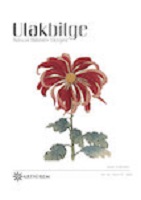ZARA İLÇESİ BAZI DÜZ DOKUMA ÖRNEKLERİNİN (KİLİM, CİCİM, ZİLİ) İNCELENMESİ
EXAMINATION OF SOME FLAT WEAVING SAMPLES (RUG, CICIM, ZILI) FROM ZARA DISTRICT
Author(s): Hülya Kaynar, Emine TonusSubject(s): Cultural history, Social history, Cultural Anthropology / Ethnology, Culture and social structure , Sociology of Culture
Published by: Sanat ve Dil Araştırmaları Enstitüsü
Keywords: Zara; Sivas; kilim; weaving; Cicim; Zili;
Summary/Abstract: In this study, plain weavings of Zara district of Sivas province, which is one of the important centers of weaving, were investigated.. Plain weavings from Kirkitli weavings group are woven in four different techniques as kilim, cicim, zili and sumac. Each technique has its own sub types. Weaving culture is one of our handicrafts that is on the verge of disappearing. Due to many reasons, today weaving has decreased to almost non-existence. In order to reflect the characteristics of the region, the few weaving samples remaining in the region were recorded and this research was needed order to contribute to the region and Turkish culture. The most weaving villages in the district were determined by the Director of the Public Education Center of Zara District. In the scope of the research; The study was carried out on 7 plain weaving samples found in Ekinli, Eymir and Gümüşçevre villages. The pattern scheme of the examined weavings, the meanings of the motifs were determined, the weaving techniques were analyzed, and the patterns of some weavings were drawn on the computer so that they could be re-woven. Detailed drawings were made by choosing samples from earrings, elibelinde and fertility motifs, which are among the most used motifs. Various compositions have been created by using motifs, which is frequently used in Turkish rug weavings such as pıtrak, star, bukağı, sawtooth, dragon, bukağı, dovetail, chest, eye, wheel of fortune, hand-fingercomb, dovetail, waterway, hair tie, cattle piss, hook, pıtrak. The most used colors in these products are black, yellow, purple, pink, green, white, red, blue, gray and orange. Cheap workmanship, migration from the village to the city, rapid development of the industry, which caused the extinction of handicrafts, caused a significant decrease in flat weaving production. Our arts, which have disappeared due to economic reasons, are tried to be kept alive by some state and private institutions due to cultural concerns.
Journal: Ulakbilge Sosyal Bilimler Dergisi
- Issue Year: 10/2022
- Issue No: 77
- Page Range: 1043-1054
- Page Count: 12
- Language: Turkish

